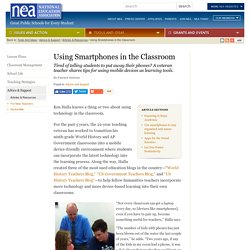

Cyberbullying Facts - Cyberbullying Research Center. Cyberbullying Facts Summarizing What is Currently Known Over the last decade, we have surveyed nearly 15,000 middle and high school students in ten different studies from over 97 different schools throughout the United States. The first two studies were online exploratory samples used to obtain a general understanding of the problem, so the numbers obtained are higher than average and not representative because they only include online teens who volunteered to participate.
Our eight most recent studies, however, have all been random samples of known populations in schools so we can be fairly confident in the reliability and validity of the data obtained (click here for more information about the methodology). Overall, about 25% of the students we have surveyed over the last eight studies have told us that they have been cyberbullied at some point in their lifetimes. About 9% said they were cyberbullied in the 30 days preceding the survey. Other Published Research Cyberbullying Offending. Using Smartphones in the Classroom.
By Edward Graham Found in: Advice and Support Ken Halla knows a thing or two about using technology in the classroom.

For the past 5 years, the 22-year teaching veteran has worked to transition his ninth-grade World History and AP Government classrooms into a mobile device-friendly environment where students can incorporate the latest technology into the learning process. Along the way, Halla created three of the most used education blogs in the country—“World History Teachers Blog,” “US Government Teachers Blog,” and “US History Teachers Blog”—to help fellow humanities teachers incorporate more technology and more device-based learning into their own classrooms.
“Not every classroom can get a laptop every day, so [devices like smartphones], even if you have to pair up, become something useful for teachers,” Halla says. Finally! Research-based proof that students use cell phones for LEARNING. Exploring subgroup effects by socioeconomic position of three effective school-based dietary interventions: the European TEENAGE project. Objectives The aim of this study was to explore subgroup effects by high and low socioeconomic position (SEP) of three previously conducted, effective European interventions.

Methods Reanalyses stratified by SEP were conducted by the research groups of each study. All studies were school-based: two multi-component interventions targeting intake of fat or fruit and vegetables (FV), and a free breakfast initiative. Results Computer-tailored advice affected fat intake among low, but not high SEP girls after 1 year. Conclusions Reanalysing intervention studies by SEP is a quick and easy way to explore patterns in effects by SEP across interventions. Teacher perceptions of using mobile phones in the classroom: Age matters! Cellphones in the Classroom: Distraction or Tool? The final version of the National Education Technology Plan (NETP) was released last week, setting forth the Obama Administration's plan for improving access to and integration of technologies for teaching and learning.

Among the recommendations the Department of Education makes in the NETP is a call for support for "efforts to ensure that all students and educators have 24/7 access to the Internet via devices, including mobile devices, and that states, districts, and schools adopt technologies and policies to enable leveraging the technology that students already have. " The push for "24/7 access to the Internet" falls under another the auspices of yet another endeavor, the National Broadband Plan. But the call for better access to Internet-ready devices, particularly utilizing tools the students already possess is an interesting one.
Because the device that is ubiquitous for American students isn't the desktop computer or the notebook or the netbook or the iPad.